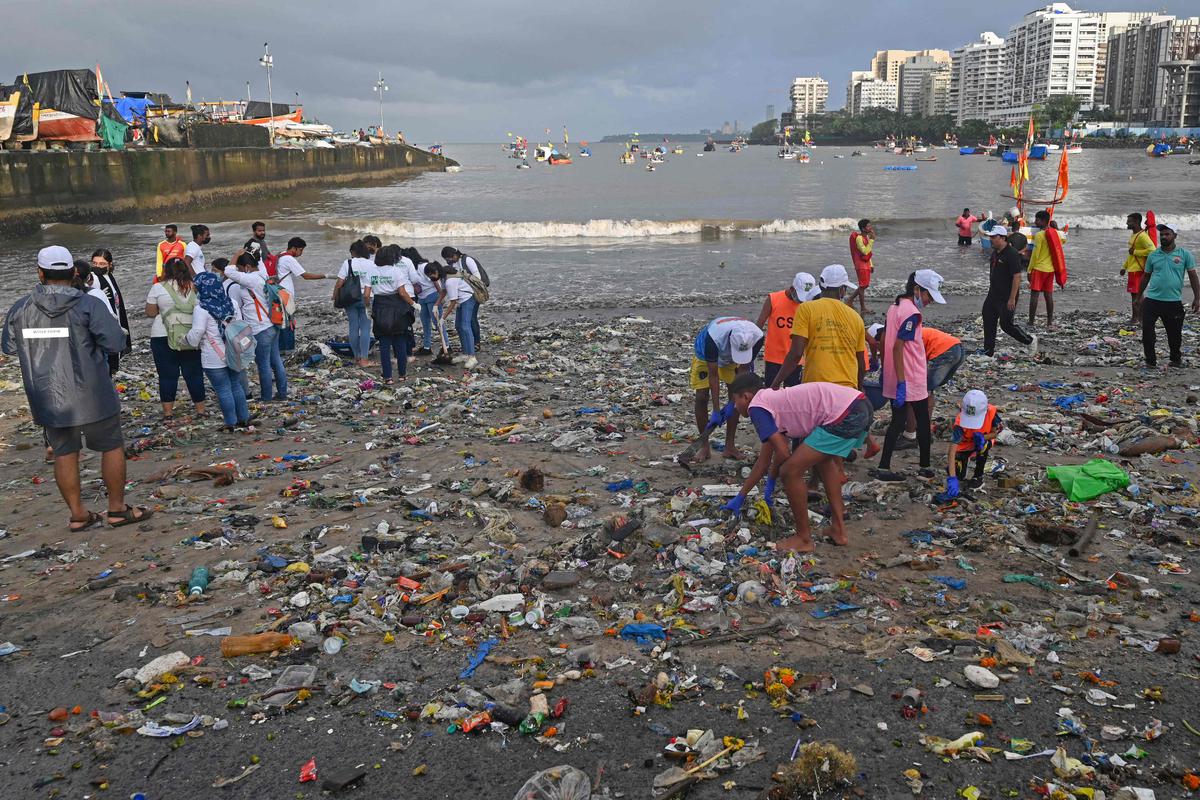From UPSC perspective, the following things are important :
Prelims level: India's Maritime Vision 2030
Mains level: Blue Economy: Sustainable use of ocean resources for economic development
Central idea
The article underscores the evolving challenges in the maritime domain, emphasizing the shift from traditional military approaches to a developmental model for maritime security. It highlights the need for collaboration among developing nations to address unconventional threats, such as illegal fishing and climate change, while acknowledging the reluctance to prioritize collective action over political and strategic autonomy.
Key Highlights:
- Evolution of Maritime Challenges: New dimensions in hard security challenges, including asymmetrical tactics and grey-zone warfare. Use of land attack missiles and combat drones reshaping the security landscape.
- Shift in Demand for Maritime Security: Growing demand from states facing unconventional threats such as illegal fishing, natural disasters, and climate change. Need for a broader approach beyond military means to address diverse maritime challenges.
- India’s Developmental Approach: Maritime Vision 2030 focuses on economic growth and livelihood generation through port, shipping, and inland waterway development. Indo-Pacific Oceans Initiative with seven pillars, including maritime ecology, marine resources, and disaster risk reduction.
New Threats in Maritime Domain:
- Recent developments include Ukraine’s asymmetrical tactics and China’s maritime militias, indicating a shift to improvised strategies.
- Emerging threats involve grey-zone warfare, land attack missiles, and combat drones.
Demand for Maritime Security:
- Majority of recent demand stems from unconventional threats like illegal fishing, natural disasters, and climate change.
- Addressing these challenges requires commitment of capital, resources, and specialized personnel.
Global South’s Perspective:
- Developing nations perceive Indo-Pacific competition among powerful nations as detrimental to their interests.
- Challenges involve interconnected objectives in national, environmental, economic, and human security.
Challenges in Global South:
- Rising sea levels, marine pollution, climate change disproportionately impact less developed states, leading to vulnerability.
- Unequal law-enforcement capabilities and lack of security coordination hinder joint efforts against maritime threats.
Creative Models for Maritime Security:
- Maritime security transcends military actions, focusing on generating prosperity and meeting societal aspirations.
- India’s Maritime Vision 2030 emphasizes port, shipping, and inland waterway development for economic growth.
- Dhaka’s Indo-Pacific document and Africa’s Blue Economy concept align with a developmental approach.
Fight Against Illegal Fishing:
- Significant challenge in Asia and Africa marked by a surge in illegal, unreported, and unregulated fishing.
- Faulty policies encouraging destructive methods like bottom trawling and seine fishing contribute to the problem.
India’s Indo-Pacific Oceans Initiative:
- Encompasses seven pillars, including maritime ecology, marine resources, capacity building, and disaster risk reduction.
- Advocates collective solutions for shared problems, garnering support from major Indo-Pacific states.
Challenges in Achieving Consensus:
- Implementation of collaborative strategy faces hurdles in improving interoperability, intelligence sharing, and establishing a regional rules-based order.
- Balancing sovereignty and strategic independence remains a priority for many nations, hindering consensus.
Key Challenges:
- Complexity of Unconventional Threats: Conventional military approaches insufficient; requires capital, resources, and specialist personnel. Challenges include illegal fishing, marine pollution, human trafficking, and climate change.
- Global South’s Coordination Challenges: Unequal law-enforcement capabilities and lack of security coordination among littoral states. Reluctance to prioritize collective action due to varying security priorities and autonomy concerns.
- Vulnerability of Less Developed States: Disproportionate impact of rising sea levels, marine pollution, and climate change on less developed states. Vulnerability stemming from inadequate resources to combat environmental and security challenges.
- Lack of Consensus and Reluctance: Reluctance among littoral states to pursue concrete solutions and collaborate. Paradox of non-traditional maritime security, where collective issues clash with political and strategic autonomy.
Key Terms and Phrases:
- Grey-Zone Warfare: Tactics that fall between peace and war, creating ambiguity in conflict situations.
- Asymmetrical Tactics: Strategies that exploit an opponent’s weaknesses rather than confronting strengths directly.
- Maritime Vision 2030: India’s 10-year blueprint for economic growth in the maritime sector.
- Blue Economy: Sustainable use of ocean resources for economic development.
- Indo-Pacific Oceans Initiative: India’s initiative with pillars like maritime ecology, marine resources, and disaster risk reduction.
- IUU Fishing: Illegal, unreported, and unregulated fishing.
- Bottom Trawling and Seine Fishing: Destructive fishing methods contributing to illegal fishing.
Key Examples and References:
- Ukraine’s Asymmetrical Tactics: Utilization of unconventional strategies in the Black Sea.
- China’s Maritime Militias: Deployment in the South China Sea as an example of evolving threats.
- India’s Maritime Vision 2030: Illustrates a developmental approach to maritime security.
- Illegal Fishing in Asia and Africa: Rising challenge with negative environmental and economic impacts.
Key Facts and Data:
- Maritime Vision 2030: India’s 10-year plan for the maritime sector.
- Indo-Pacific Oceans Initiative: Seven-pillar initiative for collective solutions in the maritime domain.
Critical Analysis:
- Shift to Developmental Model: Emphasis on generating prosperity and meeting human aspirations in addition to traditional security measures.
- Comprehensive Maritime Challenges: Recognition of diverse challenges beyond military threats, including environmental and economic goals.
- Littoral State Reluctance: Paradox in the Global South, where collective issues clash with autonomy, hindering collaborative solutions.
Way Forward:
- Collaborative Strategies:Improved interoperability, intelligence sharing, and agreement on regional rules-based order.
- Prioritizing Collective Action: Developing nations must prioritize collective action over sovereignty for effective maritime solutions.
- Sustainable Development Goals: Prioritize sustainable development goals in littoral states, addressing challenges such as illegal fishing and climate change.
Get an IAS/IPS ranker as your 1: 1 personal mentor for UPSC 2024

